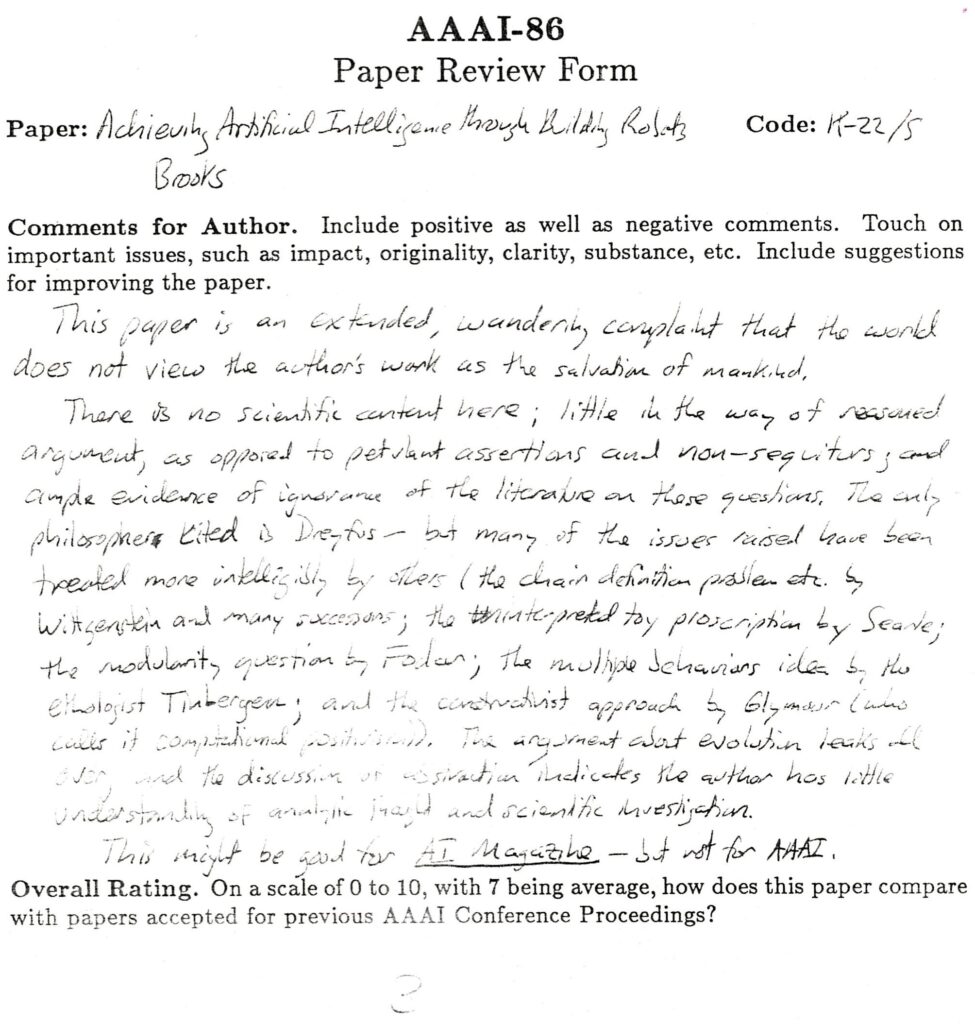Quote of the Day
If blogging didn’t exist we’d have to invent it. “People writing what they know, fluidly, publicly, with an archive for the future.” That’s it.
Walker Evans’s M2
(Apologies in advance to non-photographers)
Now there’s a properly used Leica. It belonged to the renowned American photographer Walker Evans, who bought it in 1962 and used it for as long as he used the 35mm format, i.e. until 1973 (when he began to use a Polaroid SX-70 almost exclusively). He gave the M2 as a gift to a personal and professional assistant, who has now put it up for auction. Starting bid €20,000. Auctioneer’s estimate: €40k-€50k.
Crazy prices, really. Wonder if it’ll make anywhere near that.
On the other hand, there are a lot of photographs made with that camera in museums and galleries worldwide — though they’re not from the period when Walker worked for the Farm Security Administration. For those assignments he used a range of bigger cameras including a heavy large-format 10×8 camera. Later on I think he used Rolleiflexes.
This is probably his most famous photograph, a portrait of the 27-year-old Allie Mae Burroughs, taken in 1936, when he was reporting for Fortune magazine on sharecroppers in the Deep South alongside the writer James Agee. This work was published in 1941 as the book Let Us Now Praise Famous Men.
The photograph is in the public domain. I think the original print is in the Library of Congress.
On the face of it, it’s such a simple picture. But you can see the stress of Depression-era farm life etched on this young woman’s face. So it speaks volumes.
I don’t think Evans ever saw himself as an artist. In his view he just pointed his camera and recorded things, as this video records:
My first Leica was also an M2 (chrome, not black) which I bought in the year that Evans stopped using his; I bought it from an antiquarian bookseller and financed it partly by selling a couple of rare books that I had picked up in a house clearance.
More on ‘Sabbath mode’…
Yesterday’s post about the challenges posed by the Coronavirus for elevator manufacturers mentioned the idea of ‘Sabbath mode’, where the elevator stops at every floor automatically.
This sparked a lovely email from Dave Hill, an esteemed former colleague of mine, who pointed me to a post by a commenter on Richard Dawkin’s blog.
I just bought my second refrigerator. The first one lasted 28 years. I think they forgot the redundancy. The new one has something called Sabbath Mode. Someone on the internet suggested that means it plays Black Sabbath when you open the doors. Alas no. It means special settings to accommodate Orthodox Jewish superstitions about not being able to turn electricity off and on during the Sabbath.
Some immediate questions spring to mind: Will my refrigerator keep bacon OK ? Can it be opened by a menstruating women or will it just go into auto clean mode ? Is there a Pope setting so that it won’t keep treats during Lent ? Is there an Islamic fridge that doesn’t cool beer ?
More serious questions. Am I right to be vaguely annoyed by this ? It’s clearly not the most pressing issue in the world. But like finding I’m in a building with no 13th floor it irritates me.
Maybe I should just chill.
My recommendation: chill.
Rodney Brooks on peer-review
As someone who believes that peer-review is useful but over-rated and often wrongly fetishised by both the academy and journalism, I was much cheered by this wonderful essay by Rodney Books, the great MIT roboticist. His three most influential academic papers, he recalls, were all rejected by reviewers and remained unpublished until journal editors eventually saw the light.
The piece has a lovely reproduction of the handwritten excoriation of his “However, I was worried at a deeper intellectual level, and so almost simultaneously started writing about the philosophical underpinnings of research in AI, and how my approach differed. There the reviews were more brutal.
This was a a review of lab memo AIM-899, Achieving Artificial Intelligence through Building Robots”.
And just in case readers find it difficult to decipher, he provides a print version:
This paper is an extended, wandering complaint that the world does not view the author’s work as the salvation of mankind.
There is no scientific content here; little in the way of reasoned argument, as opposed to petulant assertions and non-sequiturs; and ample evidence of ignorance of the literature on these questions. The only philosopher cited is Dreyfus–but many of the issues raised have been treated more intelligibly by others (the chair definition problem etc. by Wittgenstein and many successors; the interpreted toy proscription by Searle; the modularity question by Fodor; the multiple behaviors ideas by Tinbergen; and the constructivist approach by Glymour (who calls it computational positivism). The argument about evolution leaks all over, and the discussion on abstraction indicates the author has little understand of analytic thought and scientific investigation.
Ages afterwards the paper was published unchanged but with a new title, “Intelligence without representation” in Artificial Intelligence Journal [vol 47, 1991, pp. 139–159], the mainstream journal of the field, and it now has 6,900 citations.
Brooks’s response to those initial reverses were typical: he pasted copies of the negative reviews to his office door in MIT!
As well as his experiences of peer-review as an author, he also reflects on his experience as an editor of a scholarly journal. In 1987 he co-founded the International Journal of Computer Vision, which is now in its 128th volume, and has had many hundreds of issues. The journal has a very strong reputation and consistently ranks in the top handful of places to publish in computer vision. Brooks co-edited the first seven volumes — a total of twenty eight issues.
Here’s what he learned:
1 Purely theoretical papers with lots of equations and no experiments involving processing an image were much more likely to get accepted than a paper which did have experimental results. “I attributed this”, says Brooks, “to people being unduly impressed by mathematics (I had a degree in pure mathematics and was not as easily impressed by equations and complex notation). I suspected that many times the reviewers did not fully read and understand the mathematics as many of them had very few comments about the contents of such papers”.
2 “One particular reviewer would always read the mathematics in detail, and would always find things to critique about the more mathematical papers. This seemed good. Real peer review. But soon I realized that he would always recommend rejection. No paper was ever up to his standard”.
3 Certain reviewers would always say accept. So, “it was just a matter of me picking the right three referees for almost any paper and I could know whether the majority of reviewers would recommend acceptance or rejection before I had even sent the paper off to be reviewed”.
4 “I came to realize”,he writes, “that the editor’s job was real, and it required me to deeply understand the topic of the paper, and the biases of the reviewers, and not to treat the referees as having the right to determine the fate of the paper themselves. As an editor I had to add judgement to the process at many steps along the way, and to strive for the process to improve the papers, but also to let in ideas that were new”.
I wish more journalists reading (or mis-reading) Covid-19 papers understood this. And that they they realised that science is, at its best, organised scepticism. Which of course is why it’s so infuriating for politicians who want to claim that they are “following” it.
Brooks’s essay is terrific from beginning to end. Well worth a read.
Quarantine diary — Day 82
This blog is also available as a daily email. If you think this might suit you better, why not subscribe? One email a day, delivered to your inbox at 7am UK time. It’s free, and there’s a one-click unsubscribe if your decide that your inbox is full enough already!



